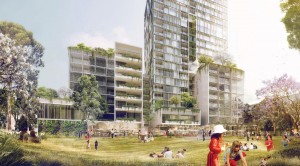More and more students are going to school. By 2019, enrollments are expected to rise 9% for students under age 25, and rise 23% for students over the age of 25 (Snyder & Dillow, 2011).Today’s American campuses are expected to reflect an academic life. Throughout the entire campus should be the opportunities for students to to have learning spaces , upgraded technology classes, and academic buildings . This is reinforced by Radloff who notes that only “one fifth of a student’s time is spent in the classroom, contributing about one quarter of the total learning variance (Radloff, 1998, p. 1). College Is very time demanding and can be over whelming is students don’t align there priorities right.
In order to see the change of campuses in America we have to go back in time to compare the first American campuses. The word campus, (derived from a Latin word for “field” – “an expanse surrounded…by woods, higher ground, etc., Harper, n.d.) A lot of the first campuses focused on separating the campus from the distractions of the outside world.There were a lot of open pastures on campus to encourage a learning environment in nature. As time went on cars were more prevalent on campuses so in order to accommodate more parking lots were made for cars. This took away from the nature and pastures on campus.In the 1970’s There was a “green day” movement to bring back more nature on campus and build awareness to to environmental change.”Now as climate change is a major scientific and political issue, a renewed commitment to sustainability is evident in campus planning efforts to integrate built and open spaces within “green infrastructure” (Way, Matthews, Rottle & Toland, 2012).”
Nature is thought to be very soothing for students and is a helping factor for rejuvenating a students mind and body.Nature is observed by students very closes in decision making for campuses. “In fact, Grummon (2009) found that 13.5% of incoming students surveyed selected a university based on sustainability concerns.”You can infuse students learning and the landscaping around then in two ways a holistic landscape and direct and indirect attention and restoration. With a holistic landscape you can incorporate nature in ever aspect of the landscape design. For example you can plant a garden surrounding a dorm with a window in each students dormitory that faces the garden giving them a view of the flowers and bushes. This provides a calm environment for students to reduce stress. You can also do direct and indirect holistic landscapes where students don’t even realize the nature around them. Example: Putting floral picture or paintings on the walls inside the lobbies of the libraries , dorms , computer labs , etc… There is definitely a cognitive belief that holistically landscaped can help improve the learning for students and encourage a healthy mind so that students can make better decisions. It is vital that campuses incorporate this for students to utilize a campus to its full potential.
http://libjournal.uncg.edu/jls/article/view/972/777
MLA: Scholl, Kathleen, & Gowri Betrabet Gulwadi. “Recognizing Campus Landscapes as Learning Spaces.” Journal of Learning Spaces [Online], 4.1 (2015): n. pag. Web. 10 Oct. 2016


